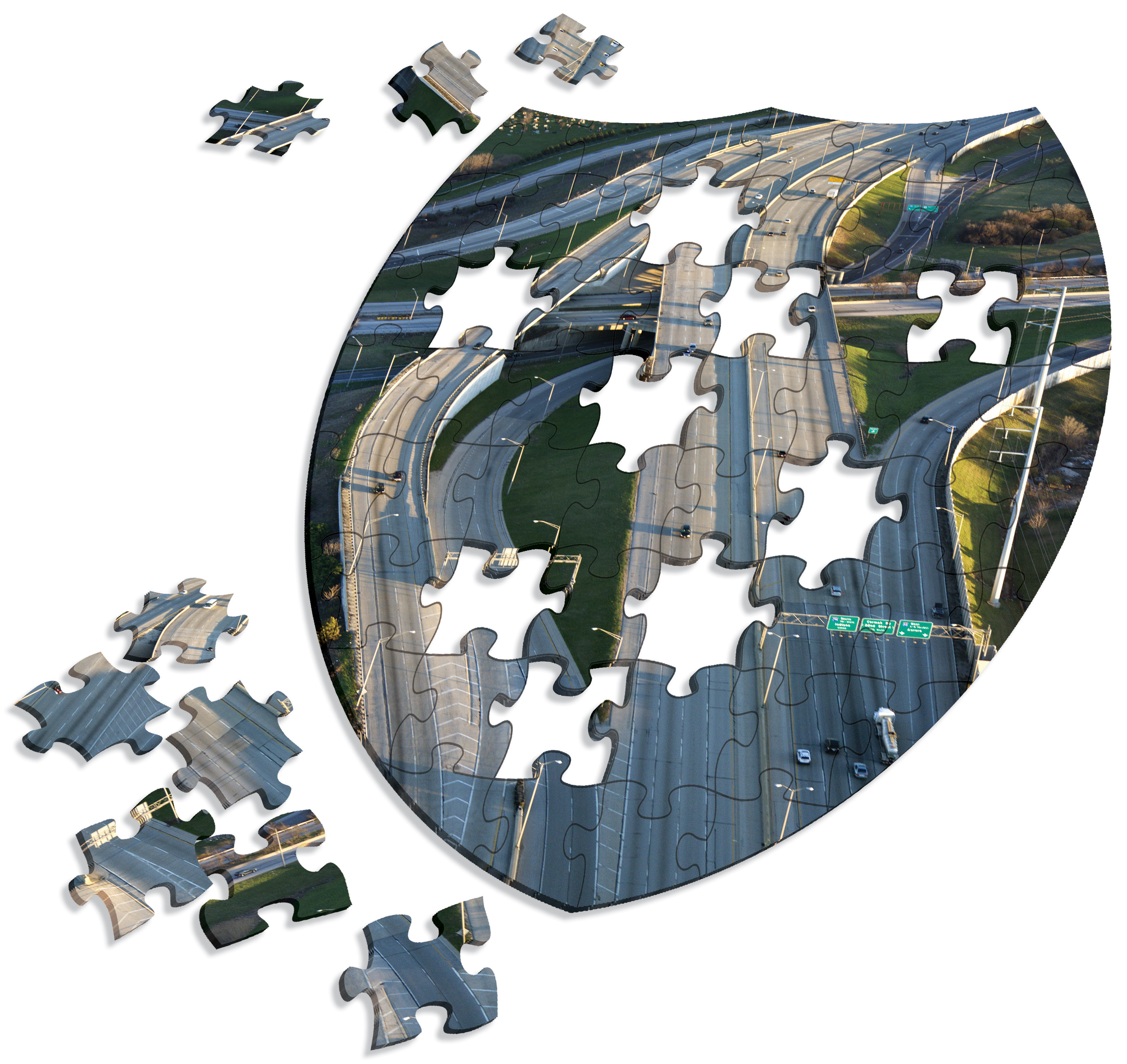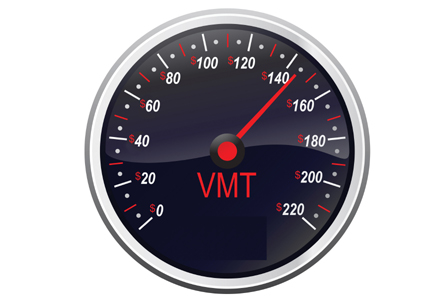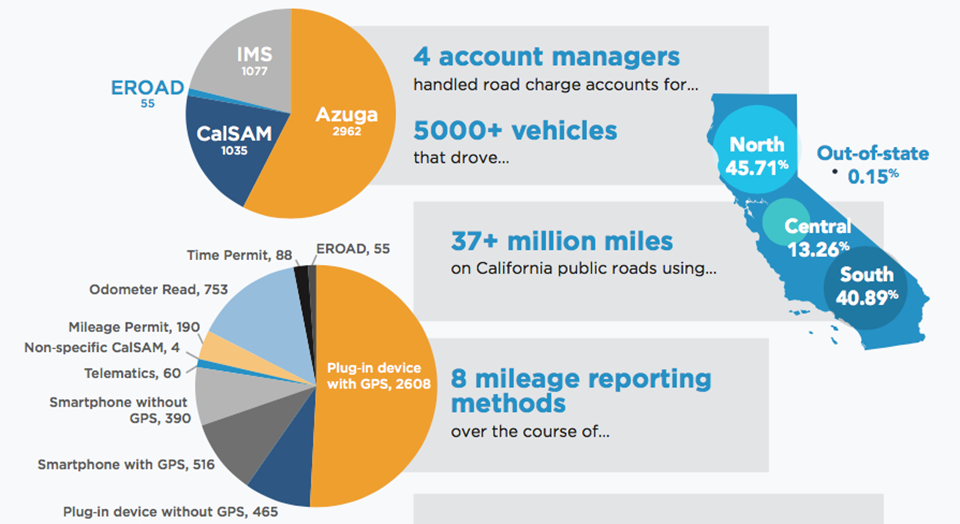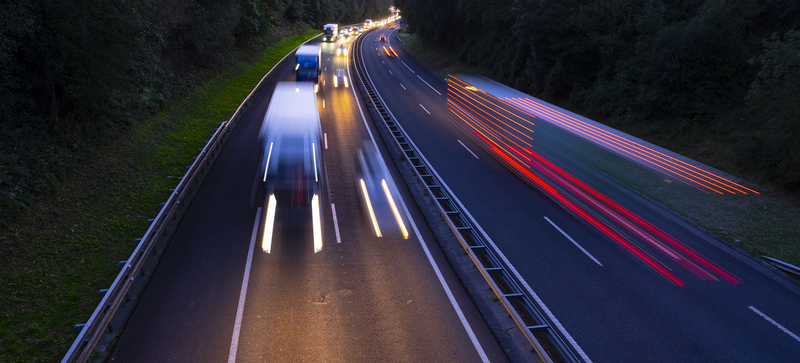There is no value in further US VMT charging trials, except to delay the inevitable. These trials should end after completion of the University of Iowa's National Evaluation of a Mileage-based Road User Charge. There is far greater promise in unleashing private operators to commence profitable, non-tolling services, then using these for toll assessment and collection as fuel distributors are currently used to collect fuel taxation. Bern Grush writes

Continued trials of technology for distance-based road user charging ignore the fact that most if not all of the pieces are already in place or available. Rather than take transport policy forward, they only serve to delay deployment.
There is no value in further US VMT charging trials, except to delay the inevitable. These trials should end after completion of the University of Iowa's National Evaluation of a Mileage-based Road User Charge. There is far greater promise in unleashing private operators to commence profitable, non-tolling services, then using these for toll assessment and collection as fuel distributors are currently used to collect fuel taxation. Bern Grush writes.
The past decade of Road User Charging (RUC) has delivered a cornucopia of conferences, papers, trials, newsprint, books and promises. What we have to show for this, besides incremental deforestation, is four national truck tolling systems and three urban congestion zones that are the basis for a tired success-litany recited by transport economists and congestion-pricing hacks, and we have shuffled several billion dollars at an average cost of 30 per cent. Worldwide we now toll perhaps an additional 1 per cent of Vehicle Miles Travelled (VMT) beyond what we would have tolled without any of this. Sadly, had we invested that money in a couple of thousand lane miles and tolled every inch of them we might actually be farther ahead.Now that the Dutch Government has collapsed, its admired ABvM program has been suspended, and the UK's stillborn Congestion Transport Innovation Fund has been shut down, it is time to rethink our approach. The only person of any stature who has said anything that has come true since the commencement of Stockholm's permanent congestion programme was President Obama's Press Secretary when he pronounced there would be no VMT charging on Obama's watch.
Government role
The problem with RUC programmes, whether VMT in the US or Time-Distance-Place (TDP) in Europe, is that governments approach them like science projects. Government should stay away from system design and technology deployment and focus on policy matters: sustainable funding, equitable access, privacy protection and standardisation. Had the Dutch done this instead of picking technologies, running tests and designing trials, government transition would not have derailed transport policy programming.Cars dominate our travel preference, vehicles are becoming more efficient, and we are beginning to electrify our automobiles. The migration from fuel tax to pay-by-use is fairer and likely inevitable. Whether we use odometer, GPS, cellular triangulation or swearing on a bible is not the core issue. Key is uninterrupted funding to keep our transportation system running, safe and expanding. Only government can restore sustainable funding.
Any pay-by-use scheme carries the potential of variable fees - more for congested times and places and less for smaller, cleaner vehicles. How prices are set, exemptions granted, and collection enforced influences who will use roads and when. This shifts traffic flows, alters settlement patterns, changes transit demand and may change property values. We require an evolutionary transition over an extended period, fair entitlement to mobility, greater choice, an opportunity to arrange graceful changes in family, work and school arrangements, and assurance that benefits exceed costs to drivers. Only government can set and enforce such policies.
Privacy and information commissioners in several countries treat very seriously location data used to calculate road use charges. The International Working Group on Data Protection in Telecommunications has published a guideline (The Sofia Memorandum) that includes a provision for all location data to remain under driver control. But there is no certification process, or promise to follow this guideline. The fear-based clamour in the popular press is deafening, as is the silence about privacy from transportation departments and ministries. Government is strongly motivated to protect privacy. This promotes acceptance. We will not have acceptance for RUC programmes for commuter vehicles without transparent action on the matter of privacy. Only government can do this.
Standards must be established and promoted.
Shifting focus
Since the 1960s RUC has evolved from demand management theory for transport economists, to a livability paradigm adopted by urbanologists, and most recently to distance-based charging for sustainable transportation funding. With fuel taxation failing due to engine efficiency, recession-induced VMT reduction, political inability to raise fuel taxes, and the spectre of the electric vehicle, some countries, particularly the US, feel the tightening tourniquet of unsustainable transportation finance.Until recently, one government preoccupation has been reliable technology and methods to meter use and collect charges. The majority thinking has been centered on GNSS metering for its flexibility and extensibility, focusing on accuracy, cost and privacy. Cost assumed that in-vehicle equipment would be dedicated to tolling, hence provisioning accurate, tamper-proof GNSS telematics is expensive for passenger vehicles, making it a bitter pill for government to swallow.
The past few years have seen an increasing interest in non-tolling services such as PAYD insurance, navigation, parking or other traveller services. These would take some of the sting out of the cost and use of GNSS telematics units, adding sugar to the meds.
But we are still left with a large and complex deployment problem. Some continue to think more and larger trials can diminish this uncertainty.
There are several reasons to run RUC trials: whether the technology works and is effective as a demand management tool; driver acceptance; its ability to be used on a massive scale; its resistance to tampering/fraud... there are hundreds of questions clouding the issue.
Numerous trials have been executed. Some deployed a few hundred vehicles. The largest in the US incorporated 2,700; Holland was poised for 60,000. It is a blessing in disguise that the Dutch are forced to rethink their programme. Perhaps the US can also abandon its delay-by-trial tactic and move directly to deployment.
Trails are expensive. An online search for the three US trials indicates that each of the 2,700 Iowa trial participants cost $6110, the 450 Puget Sound vehicles studied were $5,510 each, and each of the 300 Oregon drivers cost $9,800. The weighted average tab to the US taxpayer was $6,350 for each of 3,450 volunteers. Compare this to the three-year cost of $955 to equip each of 120,000 trucks in Slovakia for nationwide RUC.
The cost to meter a vehicle for three years is about $1,000 with current technology. Add another $500 for billing and collection and $1,000 for the study itself. If you pay drivers to participate, it is easy to justify well over $3,000 per vehicle over a three-year trial. A one-year trial might cost a few hundred dollars less.
Trials seldom promote innovation. Each of the trials I am familiar with was designed before equipment acquisition and became closed to technological innovation once commenced. Lessons learned were proprietary to trial participants. The recently extended UK
When government dominates trial participation, how fast are innovations turned to exploitable product, exports and jobs? Bonn promoted the German truck tolling system partially to help revive a moribund high-tech industry, but that was in the context of an operational system. So far the only publicly available lessons regarding the most promising technology have been provided in Germany and Slovakia - both operational systems.
Trials are unnecessary. We already know GNSS technology works. Germany and Slovakia prove that. The solution to the urban canyon problem is less well known but short technical trials have shown that this is addressable in more than one way. We know road pricing changes behaviour as shown in Puget Sound, Stockholm, Germany, London and Singapore. We know volunteer participants appreciate the need and fairness of RUC. We know almost all drivers prefer privacy protection.
We know how to distribute, manage and bill massive numbers of handsets, the mobile equivalent to in-vehicle telematics devices. There is no RUC-via-telematics mystery that a trial can address.
Time for deployment
The remaining problems are cost, trust, and equitable access. Evolutionary deployment is the best way to address these. Here is how to get started.Save $3,000-$6,000 per vehicle by creating a permanent, self-sustaining market for non-tolling, pay-by-use programmes that require road-use metering telematics. Enable PAYD insurance by changing state legislation. Offer a $100 subsidy to insurers per file switched to per-mile-pay. Enable parking-by-telematics by subsidising megaregions to reform parking management. Reduce underpriced parking, infrastructure costs and enforcement costs in a single stroke. Subsidise driver rewards for not driving during peak hours. Subsidise parking discounts for smaller vehicles and eCars.
Invite telematics payment-service bids from network managers such as
Let these operators add service bundles for infotainment, safety, 'Onstar-lite', traveller services, mobile high-speed internet, and early aftermarket Intellidrive or connected car features. Let them handle existing tolls on behalf of subscribers, as well. In exchange for temporary market protection for insurance, parking and reward distribution, demand that they meter for road use using a simple, revenue-neutral price map while rebating fuel taxes at 125 per cent. Treat owners of eCars to an equivalent rebate. Pay these operators 3 per cent of the road use charges collected, expecting them to generate sustainable profit from the other services. (Fuel-tax rebates can gradually be reduced as fleet electrification targets are met but throughout the evolutionary shift it should always be a little better to pay by use than to pay fuel taxes.)
Arrange for service operators to specialise in commercial vehicles offering logistics services instead of connected car components - or both! Arrange for others to specialise in shared vehicle applications: car-share, rentals, lease management, jitneys and so on. Encourage others to specialise in private commuter vehicles. Do not directly subsidise telematics development or purchase telematics units. Encourage service operators to collect charges at 3 per cent by fostering taxable market programmes that require the same systems as RUC. Do not bribe drivers to participate. Encourage market builders who can attract customers to voluntarily swap road-use fees for fuel taxes.
Persuasive systems require privacy protection, convenience, time and money savings. Pervasive systems allow governments to observe their reliability as enforceable collection agents. A decade-long, evolutionary approach can generate revenue (parking and service taxation), spawn new markets (jobs, exports) and address congestion (parking and insurance reform) while building trust and an installed base of metering and enforcement system operators to replace fuel distributors as tax collection nodes.











